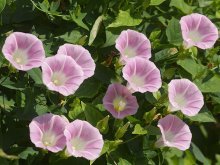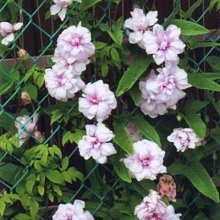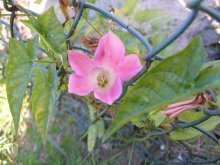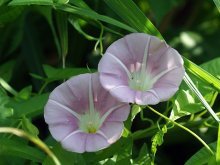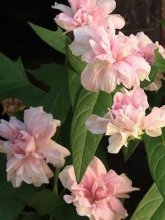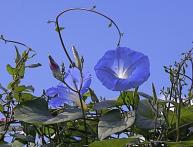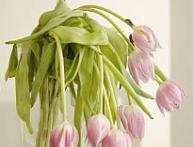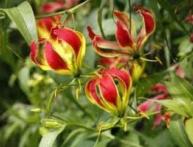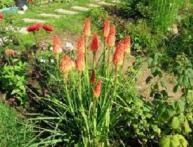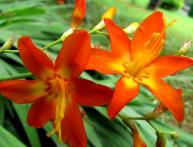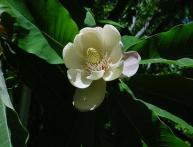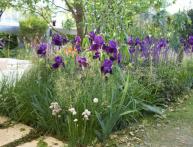Calistegia multiplex - planting and care, features of planting and defrosting

Calistegia - a herbaceous climbing plant, a relative of the common bindweed. It has a delicate appearance and is often used for landscaping balconies, gazebos and fences. The plant is popularly called the French rose or povoy. As for the calistegia multiplex flower variety, planting and care will not be particularly difficult. Why do gardeners love this plant?
Content:
- Botanical description of the plant
- Popular varieties
- Features of planting and propagation
- Basics of flower care
- Actions after flowering ends
- Use in landscaping
- Growing problems, pests and diseases
Botanical description of the plant
Calistegia belongs to the family Convolvulaceae. The flower's homeland is Eastern Asia. The plant can be found in Japan and northern China. It grows very quickly, the stems instantly elongate.
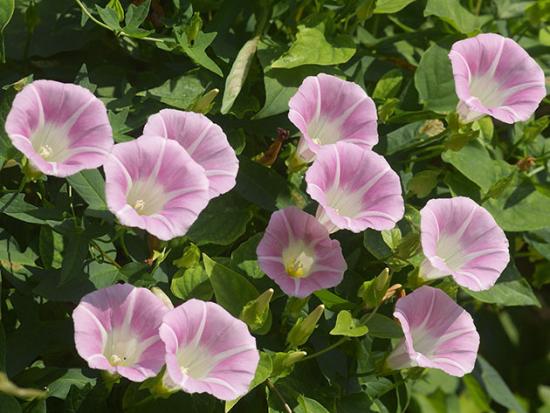
The popular variety Calistegia multiplex is a perennial frost-resistant vine. Its height can reach 3.5 meters. It blooms from July until frost. After this, the ground shoots die off.
A distinctive feature of the French roses - lush, mesmerizing blooms. The flowers are double, pearl pink. They completely cover the entire plant and shimmer amazingly in the sun. In appearance they resemble roses or peonies. They look very elegant thanks to their size.Each flower is massive, about 10 cm in diameter.
The plant is stable and unpretentious. However, it requires a lot of sun and light. Grows well in any ground, is rarely exposed to diseases and parasites.
Calistegia multiplex, in terms of external data, competes with popular clematis. Other representatives of the bindweed genus cannot boast of such gorgeous flowering.
Popular varieties
Calistegia has 25 varieties. However, not all of them are suitable for artificial cultivation and landscaping. Some subspecies are considered common weeds. Many decorative specimens, in addition to calistegia multiplex, can become a wonderful decoration.
Flora captivity (fluffy)
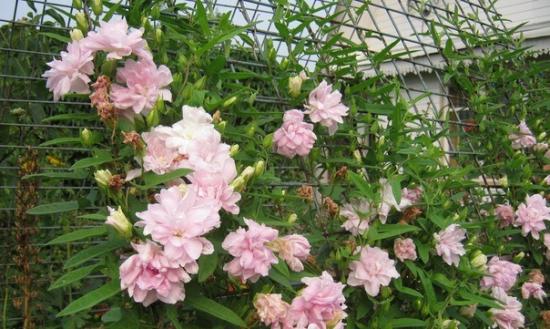
This variety is famous for its longest shoots, which can reach 4 m. The stems have a leathery, bright coating. The flowers are double, large, pompom-like. Their diameter ranges from 4 to 9 cm. A delicate aroma emanates from the buds.
Japanese (ivy leaf)
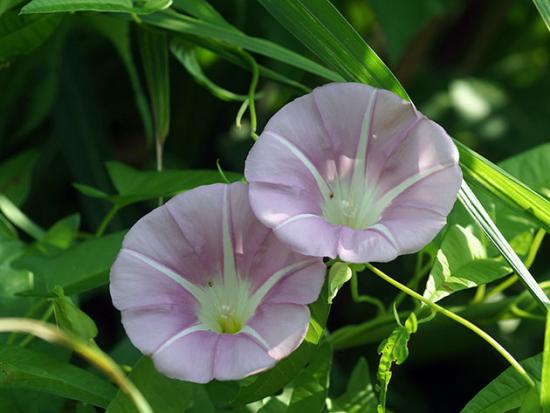
Blooms quite large, light pink flowers from July to September. This variety is characterized by tight lashes up to 2.5 m long.
Hairy
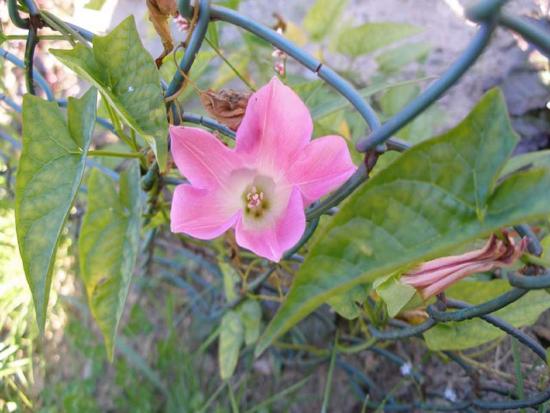
A climbing plant that is common in the southern part of the Far East. This subspecies practically does not climb, the stems are shorter than those of its counterparts and reach 0.8 m. The leaves are petiolate, yellow-green in color. It blooms from mid-July with axillary flowers 4-6 cm in size.
Hops
The leaves are narrower compared to other representatives of the species. The inflorescences have a rich pink tint, the surface of the flowers is terry. This is a variety of the famous calistegia multiplex.
Fence
The subspecies is perceived by many as a weed. The flowers look much simpler, the color is white. Their diameter is modest and is no more than 5 cm.The plant grows and reproduces quickly.
Features of planting and propagation
If we are talking about the plant calistegia multiplex, planting and care in open ground will not be difficult with the right approach. The flower is propagated vegetatively by dividing the creeping rhizome. Even a small piece quickly takes root and sprouts. The plant has excellent regenerative properties.
At the beginning of spring, newly formed flowers are first rooted in pots or large boxes filled with peat. Before planting, the ends are dipped in crushed coal. Planted plants should be watered.
Calistegia is ready for transplanting into open ground when the shoots grow to 5 cm. This usually happens by mid-May. To liana did not grow too quickly and was more dense, the shoots were pinched.
To plant, dig a trench and fertilize it with fertilizer, ash and humus. The roots need to be provided with enough space. If they are crowded, the flower may die. After planting, it is advisable to organize supports using stakes, poles and wire. Under favorable conditions, calistegia can grow in one place for 10 years or more.
Basics of flower care
The main task of the owner of calistegia is to initially choose the right location for the flower. This is the basis for successful growth and flowering.

Location
The site must be selected with good lighting and access to the sun. In shaded corners, plant growth slows down significantly, and flowers appear 2-3 weeks later.
Soil and watering
French rose is unpretentious in composition soil. Deciduous, peat or loamy soil is suitable for it. It can grow in one place for a very long time (10-15 years). Does not require frequent glaze and tolerates dry periods well. The proximity of groundwater is more dangerous for it. If the summer is not too dry, the flower is content with natural moisture. Additional watering is necessary only in the complete absence of rain.
Top dressing
The plant needs additional fertilizer during the period of active flowering. You need to purchase a ready-made mineral mixture from a specialized store and prepare it according to the attached instructions. Feeding administered twice a month. In autumn, ash is added to the soil.
Trimming
Periodic pruning is needed throughout the flowering period. It is very important to remove dried flowers. This way you will not only help the plant, but also improve its appearance. At the end of flowering, the shoots are cut off.
Actions after flowering ends
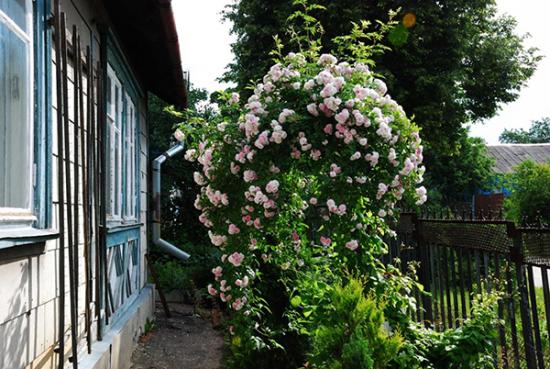
At the end of the flowering period, the shoots of calistegia die. After it loses its beauty with the onset of frost, the ground part is cut off. During warm winters, the flower does not need additional protection.
If frost is expected, it is better to build a small shelter. In mid-latitudes, the plant wakes up in May. As a shelter, you can use fallen leaves from the site, peat or sphagnum moss.
Many gardeners prefer to dig up part of the flower along with the soil, and then store it in a cool room. You need to ensure that the soil is moist and does not dry out.
Using calistegia in landscaping
The flower is used mainly in vertical gardening. In country houses and summer cottages, it is used to decorate and decorate fences, fences, buildings, and gazebos. Arches entangled in greenery with large pink flowers look great.
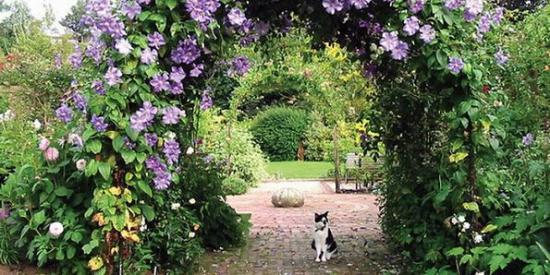
Not only suitable as green everyday decor.With the help of a curly flowering carpet, they create festive decorations for various receptions, celebrations and events. To do this, you will need to plant the flower in the right place in advance.
It is worth remembering that calistegia is a bad neighbor for other plants. Therefore, you should not plant it next to other representatives of the flora. This is not a plant that is advisable to combine with other flowers.
You can also keep the vine in containers and boxes. They will harmoniously decorate the verandas and balconies. But the flower is not suitable for creating bouquets.
Growing problems, pests and diseases
The main problem that arises with a climbing plant is excessive growth of the root system. It is necessary to dig out part of it along with the shoots in time. The boundaries of rhizome growth should be immediately determined.
Lianas susceptible to large numbers of slugs and snails. It is also possible that the foliage can be eaten by parasites. To prevent this from happening, it is recommended to treat the shoots with special chemicals.
Occasionally, bindweeds are affected by powdery mildew, after which white spots are visible on the leaves. If such a problem is detected, the plant is treated with a fungicide.
In rare cases, the appearance of arachnoid tick. This happens during the hottest time of the year. There are specially designed solutions for the fight.
Simple planting and care, amazing photos of the Calistegia multiplex flower make it an excellent option for landscaping the area. It does not require constant watering and grows quickly. However, like any plant, it needs attention and support.
If you follow the recommendations, calistegia will show itself in all its glory and become a luxurious green decoration.
Calistegia multiplex, planting and care, detailed information, watch the video:



